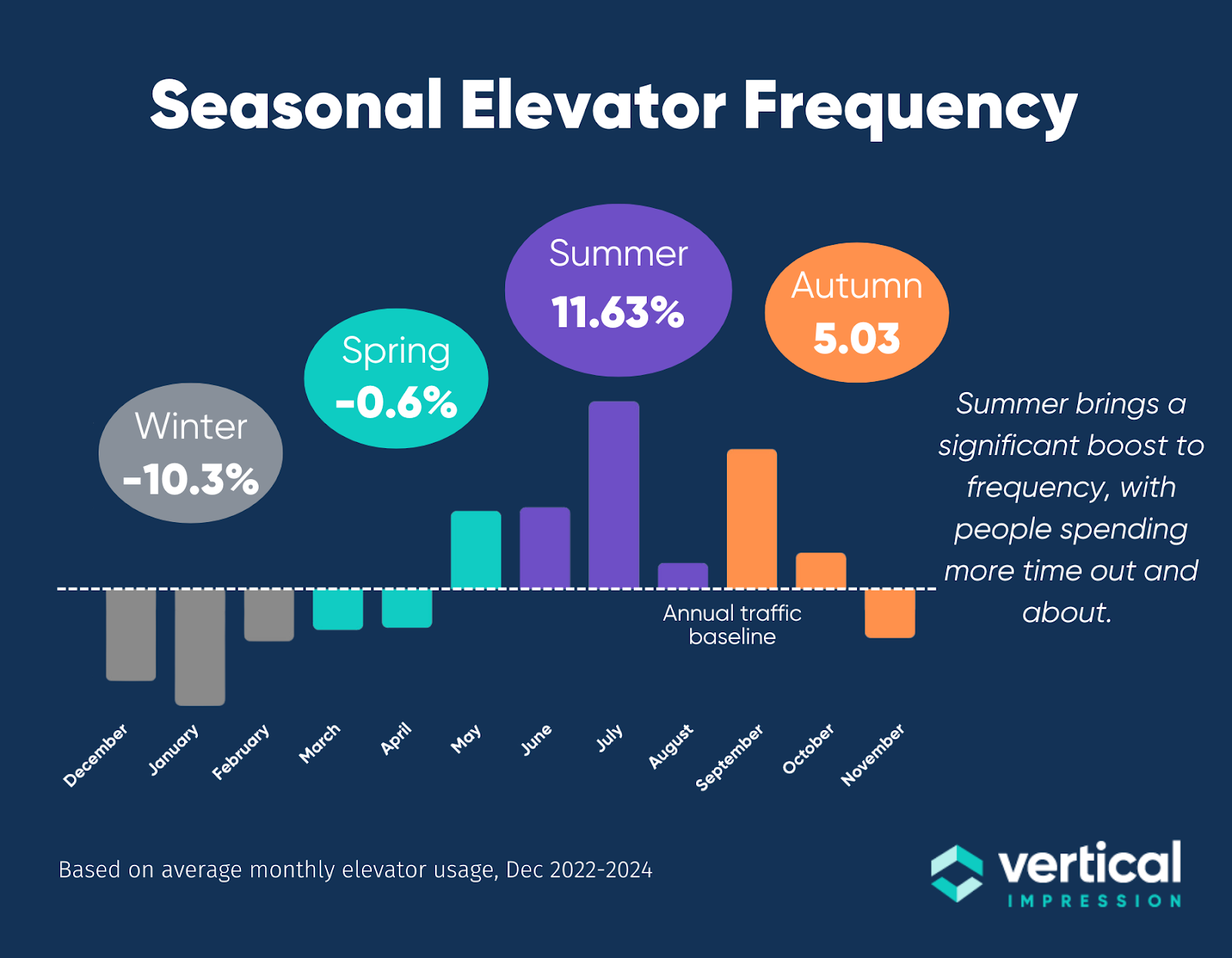
March 28, 2025

Picture this: Marketing directors across the country, huddled in Q1 planning meetings, instinctively slashing summer budgets.
"Everyone's on vacation," they say. "Elevators are empty," they insist. "Save the budget for fall," they conclude. It's a belief so deeply rooted that few question it. We all take it as truth that summer means fewer eyes, less focus, and underwhelming results. But what if that assumption is costing you the year's best chance to reach people?
The story seems to make sense at first glance. Summer means vacations. Vacations mean empty condos. Empty condos mean fewer eyeballs. Fewer eyeballs mean wasted ad dollars.
This chain of reasoning has driven decades of media planning decisions, creating a self-fulfilling prophecy where summer becomes an advertising desert – not because people vanish, but because ads do.
At Vertical Impression, we don't trust assumptions. We measure actual attention. And when we looked at our AVA data tracking elevator traffic patterns across multiple years, what we discovered challenged everything we thought we knew.
Our vision event data tells a story that marketing books missed:
Looking at raw traffic numbers, July leads with an eye-opening 22.1% surge above baseline. June follows with a 9.6% lift, while August holds strong at 3.1% above baseline. Taken together, summer months show an 11.6% boost in traffic, far better than both spring (-0.06%) and winter (-10.3%).
.

Even more telling, this isn't a one-year anomaly. We're seeing consistent summer performance advantages year over year, with only autumn's stability (5.03% average) coming close to summer's performance.
Elevator ads are known to grab more focus, getting 230% more watch time than standard digital ads and 150% more than static OOH ads. With higher traffic, are people still paying as much attention as before, or is this new traffic less engaged?
In fact, the summer edge goes beyond just more elevator riders. Our tracking shows summer months deliver 4.9% more attention than the yearly average. This trend is even stronger on weekdays, with attention higher than weekends, showing that people are still heading to and from offices, even in the summer months.
The data made us rethink what we thought we knew. In both residential and work buildings, a few key trends drive this unexpected summer surge:

This misplaced belief on summer elevator traffic provides an opportunity. If your rivals cut back in summer ad spend based on flawed beliefs, your message faces less noise during what's truly a high-attention time.
What this means for your ads:
Perhaps the most valuable insight isn't about summer at all – it's about making decisions based on measured attention rather than marketing mythology. So as you finalize your spring and summer media plans, ask yourself: are you following conventional wisdom or actual audience behavior?
Your competitors may still believe in the summer slump. Our data shows that's practically handing you an engagement advantage when audiences are most captive.